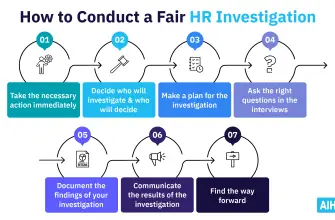Direct discrimination in UK workplaces is a significant issue that affects many employees and employers alike. It refers to the unfair treatment of an individual based on their protected characteristics such as age, sex, race, disability, religion or belief, sexual orientation, marriage or civil partnership, pregnancy or maternity, and gender reassignment. This article will delve into the meaning of direct discrimination, provide examples of direct discrimination, and offer a comprehensive HR guide and prevention tips to help combat this issue.
Understanding Direct Discrimination
The direct discrimination definition refers to the act of treating someone less favourably than another person in a similar situation because of a particular characteristic. It is important to note that direct discrimination can occur even when the discriminator does not share the same characteristic as the victim. This is known as direct discrimination by perception.
For instance, if an employer refuses to hire a candidate because they believe the candidate is gay, regardless of whether the candidate is actually gay or not, this would be considered direct discrimination by perception. The key factor here is the discriminator’s perception and the subsequent unfair treatment based on that perception.
Examples of Direct Discrimination in the Workplace
Understanding what direct discrimination looks like in a practical context can help HR direct their efforts towards preventing such incidents. Here are some examples of direct discrimination:
- A manager refusing to promote a qualified female employee because they believe the role is more suited to a male.
- An employer not hiring a candidate because they are pregnant or planning to start a family.
- A company providing fewer opportunities for training and development to older employees based on the assumption that they are not as tech-savvy as their younger counterparts.
- An employer paying a disabled employee less than a non-disabled employee for doing the same job.
These examples direct discrimination illustrate how individuals can be disadvantaged in the workplace based on their protected characteristics. It’s crucial for HR and managers to be aware of these scenarios to ensure they are not treating employees differently in the UK or anywhere else.
Direct Discrimination: HR Guide
HR plays a pivotal role in preventing direct discrimination in the workplace. Here are some steps HR can take:
- Develop and implement a comprehensive anti-discrimination policy that clearly defines what constitutes discrimination and the consequences for such behaviour.
- Provide regular training to all employees, including managers, on diversity and inclusion. This should cover the meaning of direct discrimination, examples of direct discrimination, and how to prevent it.
- Establish a safe and confidential reporting mechanism for employees to report instances of discrimination.
- Take all complaints seriously and conduct thorough investigations.
- Ensure fair and consistent treatment of all employees, regardless of their protected characteristics.
Prevention Tips
Preventing direct discrimination requires a proactive approach. Here are some prevention tips:
- Encourage a culture of respect and inclusivity in the workplace.
- Ensure all employment decisions, such as hiring, promotions, and pay, are based on merit and not on protected characteristics.
- Regularly review and update company policies to ensure they are in line with current legislation and best practices.
- Provide support and resources for employees who may be victims of discrimination.
In conclusion, direct discrimination is a serious issue that can have severe consequences for both employees and employers. By understanding the meaning of direct discrimination, recognising examples of direct discrimination, and implementing effective prevention strategies, HR can play a crucial role in creating a fair and inclusive workplace.










